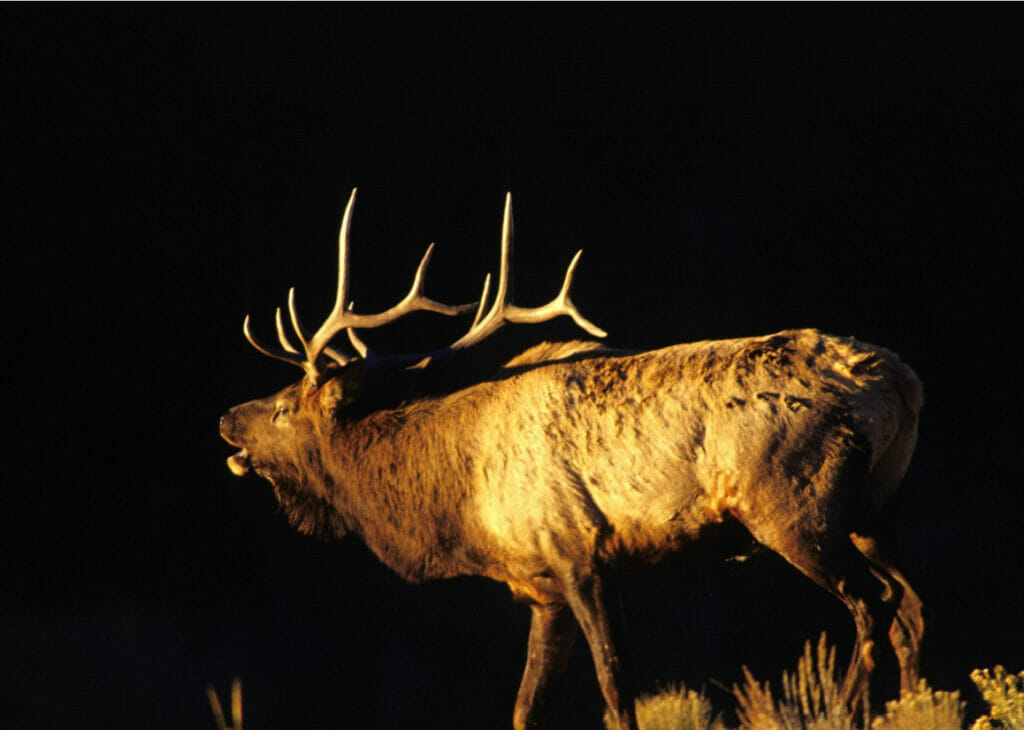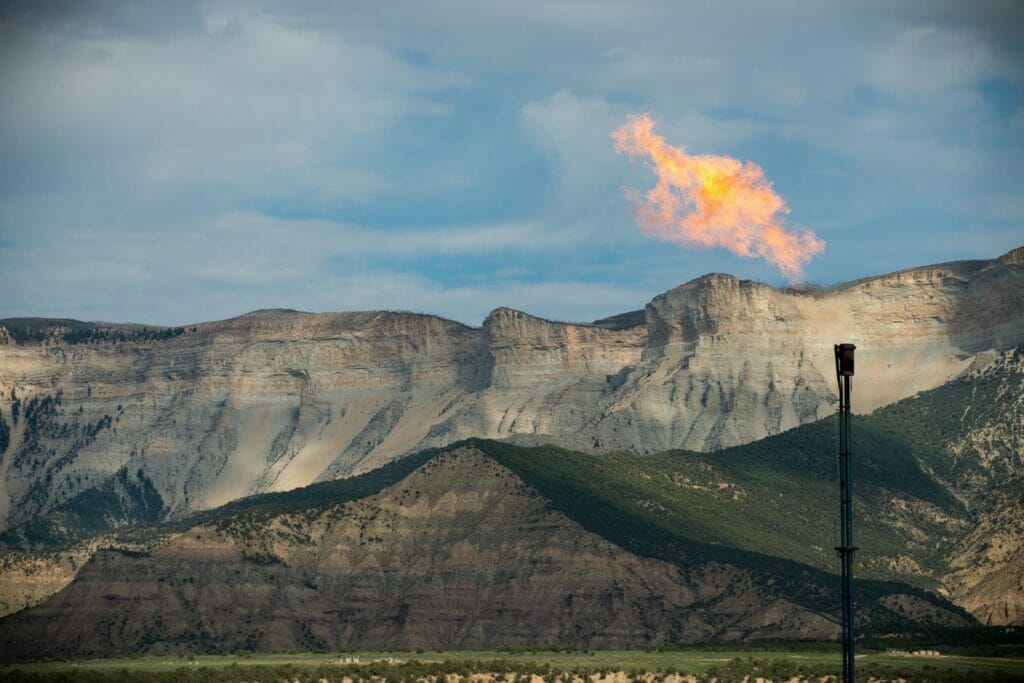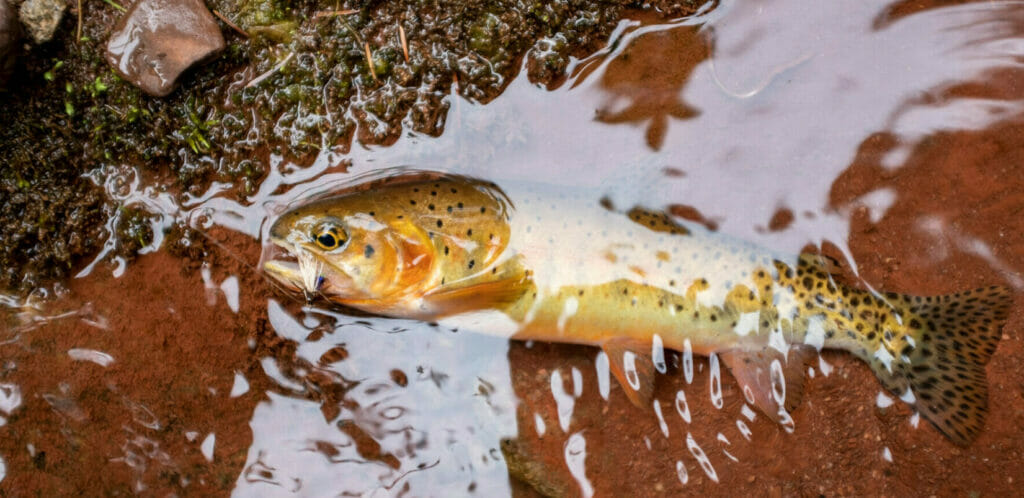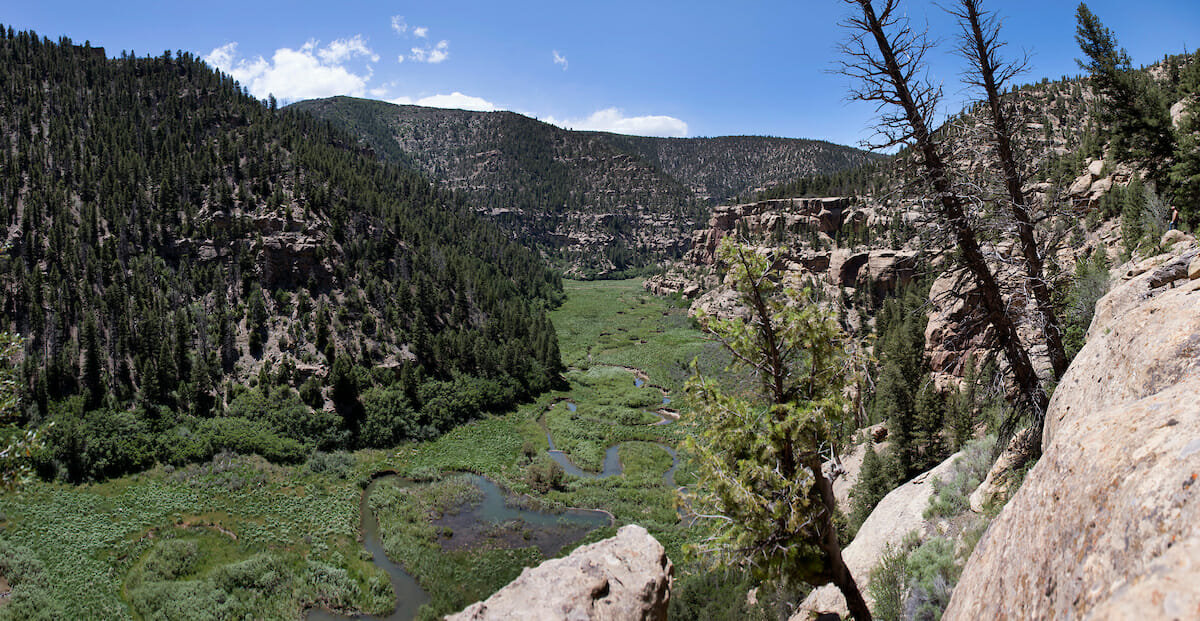Editor’s note: TROUT Magazine Online will publish frequent essays on “American Places,” lands and waters that make the nation unique. These essays will be crafted by Trout Unlimited staffers, contributing writers and volunteers. These places are near and dear to many and worthy of sharing in hopes of creating more advocates for the treasures so many Americans cherish.
by Andy Rasmussen
Prime hunting and fishing in a little known area of Utah
The Book Cliffs area and its Wildlife Management Units have been a priority landscape for Trout Unlimited and its partner sporting organizations for almost two decades. The area has been a focal point for varied conservation efforts during that time.
The Book Cliffs are a wild landscape critical to the survival of wildlife and fish in eastern Utah. Colorado River cutthroat trout have been restored and established to over 75 miles of stream in the area. But beyond the trout, the Book Cliffs might be Utah’s best big game hunting destination. It contains some of the highest quality mule deer and elk habitat in the West. Every year some of Utah’s biggest mule deer bucks and bull elk come from the Book Cliffs. The country that we know as the Book Cliffs extends from Price all the way to Rifle, Colorado.

Each fall, hunters descend on the Books for dozens of limited-entry hunts for both deer and elk. Unsurprisingly, hunter success is excellent in this wild region. Success rates range from 76-92 percent most years.
Grand County (Utah) Commissioner Trisha Hedin, a resident of the area for over two decades and an avid hunter, recently wrote, “I started hunting in the Book Cliffs 16 years ago. I began simply driving the dirt roads endlessly. Those working to check on gas wells would occasionally stop me and ask me what the hell that I was doing in that country alone and I would reply that I hadn’t the slightest clue. Over time, their help and my desire to know more has led me to endless days in these wild lands.”
The land is riddled with deep canyons, dark timber, aspen, lush meadows, clear creeks, and ridges that run forever and abound in wildlife. On any given day of wanderings, I may see mule deer, the occasional flock of turkey, elk sprinkled here and there, a black bear stumbling across a hillside and a surly stand of bison.
Commissioner Trisha hedin
Hedin continued, “In the beginning, the addiction was elk and to be honest, those animals still inspire a love that I may never shake. Elk are tough as nails, awkward and majestic in appearance all at the same time and ghostly in their movements. I can bump a herd of thirty elk in dark timber, hear thunder for seconds, another snap of a branch and then, silence. Pure magic. However, my addiction has moved to pursuing other game, but if I’m honest, I’m not really hunting. It just gives me a reason to be prowling about in the wild.”
Unfortunately, there are significant threats to this most productive deer and elk hunting region in the state as well as to the miles of native cutthroat streams. Many oil and gas wells already dot the region and leasing continues on new parcels. And this year a once-dead highway project has been revived and threatens to bisect the Book Cliffs with a major, and unnecessary, highway slicing through the heart of critical migration corridors and wild country. While the animals use the backcountry roadless terrain in the region, the most important habitat for mule deer and elk is actually the lower-elevation winter range.

Ensuring industry and the Bureau of Land Management use the best available practices, the least surface disturbance, the cleanest possible drilling methods, and the most current reclamation science is vital for the long-term health of the deer and elk herds and the native fish in the Book Cliffs region.
Regarding the proposed highway, Hedin continues, “Wildlife and highways do not mix. There is endless research that shows the impact of highways on animals in wild places such as the Book Cliffs. Obviously, the building of a highway fragments animal habitat, leading to issues of isolation of populations and migration. Highways lead to direct vehicular mortality. Highways bring noise and visual disturbances to wildlife which have been shown to decrease fawn and calf recruitment and increase predation that leads to energy loss in large ungulates. I don’t need to point out the obvious, but the survival of species depends upon the ability to avoid predators, conserve energy and reproduce. Highways also contribute to increased illegal activity such as poaching and the introduction of invasive plant species, thus radically changing the forage composition.”

“I have been criticized for touting this area as a pristine wilderness, and I will concede that it isn’t pristine. Long ago, natural gas lines were run and those wells still pump away to provide us all with a much-needed resource. However, this country is wild and that is something that we should all treasure. If you never wander into this area, that is more than okay, but I hope that you will know that you have these wild places in your backyard and work to preserve them.”
Andy Rasmussen is the Utah field coordinator for TU’s Angler Conservation Program



